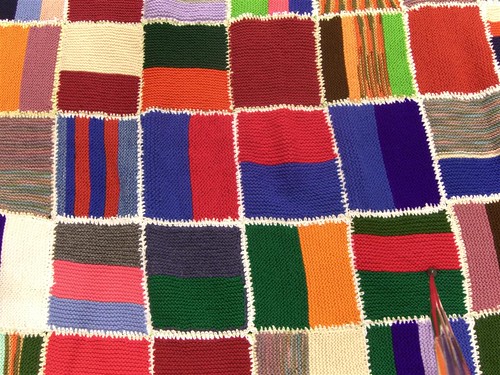 Lowe’s had a 1 Watt Luxeon Plastic Flashlight on sale for $2.50 recently. I ordered one online for in-store pickup and was able to get one of the last flashlights available at the store closest to me (they actually didn’t have enough to fulfill all of the orders, but I was able to convince them that I deserved one). When I brought it home and broke it open I found a nice white 1 watt Luxeon star hex (LXHL-MW1D) bolted to the top. The flashlight itself felt relatively cheap and flimsy, so I decided to find out what I would do with it and how I could modify it. The flashlight used 3 1.5V AA batteries in series (i.e. 4.5V open circuit) and had a 1 Ohm resistor in series to limit the current to the LED. White flashlights are nice, but sometimes you need to just have fun. So, I took one of the Luxeon K2 Royal Blue LEDs (LXK2-PR12-L00) that I had purchased with Matt Kocsis and dropped it in.
Lowe’s had a 1 Watt Luxeon Plastic Flashlight on sale for $2.50 recently. I ordered one online for in-store pickup and was able to get one of the last flashlights available at the store closest to me (they actually didn’t have enough to fulfill all of the orders, but I was able to convince them that I deserved one). When I brought it home and broke it open I found a nice white 1 watt Luxeon star hex (LXHL-MW1D) bolted to the top. The flashlight itself felt relatively cheap and flimsy, so I decided to find out what I would do with it and how I could modify it. The flashlight used 3 1.5V AA batteries in series (i.e. 4.5V open circuit) and had a 1 Ohm resistor in series to limit the current to the LED. White flashlights are nice, but sometimes you need to just have fun. So, I took one of the Luxeon K2 Royal Blue LEDs (LXK2-PR12-L00) that I had purchased with Matt Kocsis and dropped it in.
I removed the 1 Ohm resistor and found that the LXK2-PR12-L00 drew about 0.7 Amps (due to the internal resistance of the batteries), which is the max current for this emitter binning. Powering the emitter without a current limiting resistor is a non-ideal solution because different batteries (i.e. NiMH, Alkaline, NiCd, etc.) have different voltages and internal resistances.
Another consideration is heatsinking the emitter. The flashlight had an aluminum ingot that acted as a heatsink for the LXHL-MW1D, so I used a dab of heatsink compound to secure the LXK2-PR12-L00 emitter to the ingot. As the emitter heated up, it drew more current, which in turn heated it up more. Therefore, I’ve made sure not to operate the flashlight without a current limiting resistor for more than 30 seconds with a 50% duty cycle.
The LXK2-PR12-L00 emitter’s radiometric power is ~200 mW and has a dominant wavelength of 455 nm (min = 440 nm, max = 460 nm). What does this mean? Well, the radiometric power is a measure of the electromagnetic radiation’s energy. Because the human eye is less sensitive to electromagnetic radiation greater than ~700 nm and less than ~400 nm, some blue LEDs (like the Royal Blue), IR LEDs, and UV LEDs will use radiometric power instead of lumens for a more accurate statement of energy output. While the human eye is less sensitive to the colors, the total energy output can still be dangerously high (as is the case with IR lasers and UVB and UVC light). The wavelength of blue light is normally between approximately 440-490 nm. The Royal Blue emitter’s output has a shorter wavelength than the average blue light (465 nm), so it’s output is stated in radiometric power instead of lumens. The interesting thing about having a shorter wavelength is that it can make certain colors and pigments fluoresce.
Playing around with my modified Luxeon flashlight, I found that some yellows and certain oranges and pinks fluoresced. Here are some before and after pictures:



